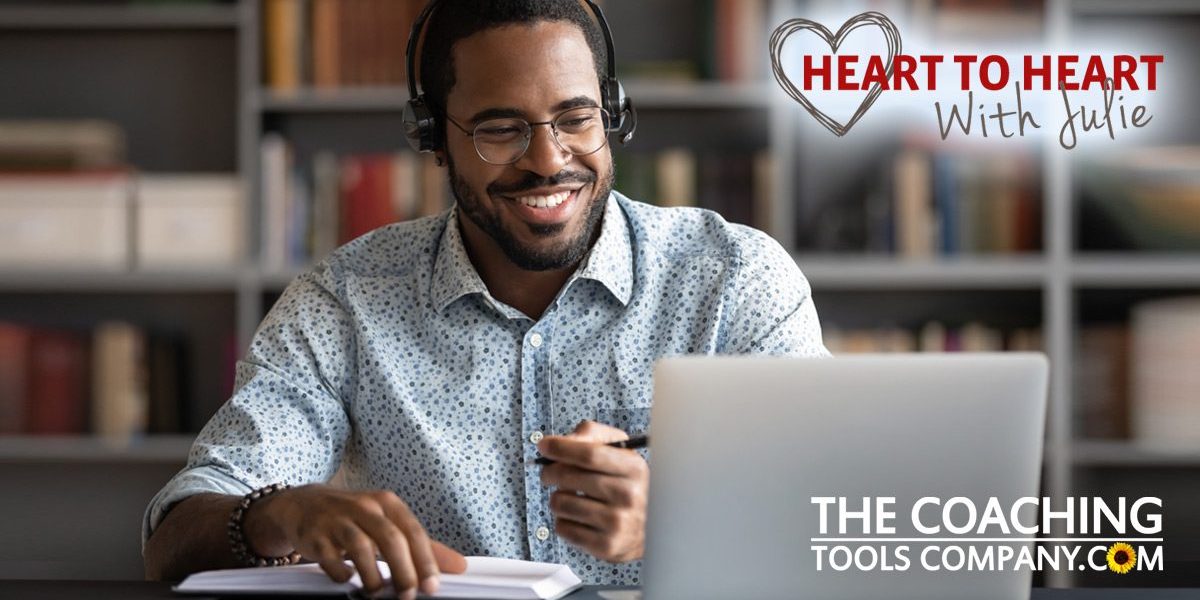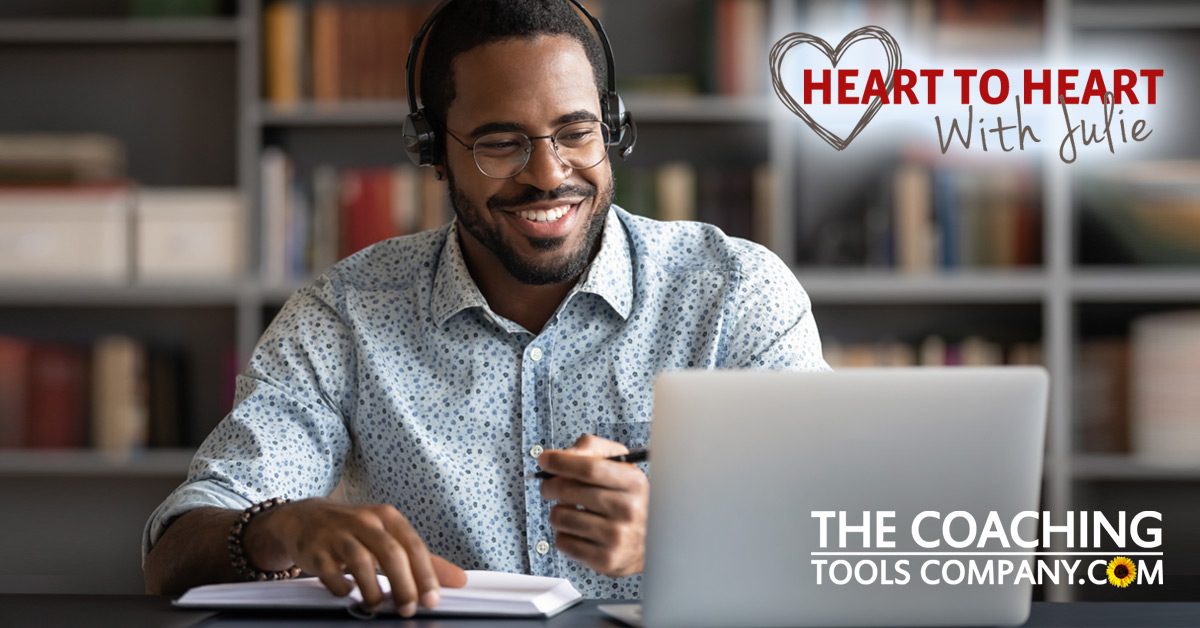Originally Posted on The Coaching Tools Company as How to be a Better Coach—Get the Unspoken on the Table! | Get "Heart to Heart" with Julie Johnson MCC
| In this “Heart to Heart with Julie” column, Julie Johnson MCC shares sample coaching conversations and situations to help you grow along with her learnings, ideas and practical tips to help us all become better coaches. These are real coaching experiences that illustrate common issues coaches face.
We encourage you to share your thoughts, learnings and own experiences in the comments below! These articles were first posted on Julie’s blog, The Coaching Cube, and have been updated for inclusion here. |
In this article, Julie shares a technique she uses to help you be a better coach, deepen your coachee relationships and help you serve individual clients better!
Get the unspoken on the table
Have you ever wondered whether your coaching is reaching its full “making a difference for the coachee” potential?
Well, here’s a technique to help you find out in real time. And, it can do oh-so-much-more!
I’ve been amazed at what I’ve learned about my coaching (and myself) as a result. Not to mention how it’s helped my coachees.
I call it the “Feedback Exchange”
We offer our coachees feedback and straight-talk as part of the coaching relationship. It’s simply what we do. So this “Feedback Exchange” levels the playing field, allowing our coachees to return the favour.
Here’s how the “Feedback Exchange” works
- At the beginning of your session, ask your coachee if they would be willing to offer you feedback at the end.
- Assuming affirmative, wrap up your discussion so that you have 5-10 minutes left at the end for this open exchange.
- Explain that you have 2 questions: one asking for positive feedback; the other asking for constructive feedback.
- Ask the first question:
- “What did I do in this discussion today that you found useful?”
- After each answer, keep asking, “What else?” until they’ve exhausted their ideas.
- TIP: The newest insights may well be the last ones.
- Then do exactly the same with the second question:
- “What did I do in this discussion today that I could have done differently or better?”
- Again ask, “What else?” repeatedly, until there are no more ideas.
- TIP: The last ideas may be the ones that were the most difficult to say or even formulate, and therefore the most insightful for you and your coaching.
- IMPORTANT: Do ask for clarification along the way, but don’t try to explain your rationale for doing what you did. Explaining yourself will make you look defensive and make it harder for your coachee to offer genuine feedback.
- Wrap-up by thanking the coachee for sharing. Remember that this feedback exchange will not always be easy for them. But once you demonstrate your ease in receiving their feedback, they may open up and give you some real gems.
But coaching is not supposed to be about me!
You might be thinking: How can I spend 10 minutes of our precious time together focused on me? I would argue that by putting the “unspoken” on the table, this feedback exchange will bring your coaching up to the next level, in service of your coachee.
The benefits of a “Feedback Exchange”
Well, a LOT of things will be happening and here are some of them:
- Perhaps the most obvious—you’ll gain insights into your own coaching.
- You’ll learn what works well and less well for this particular coachee.
- Your coachee may learn something more about themselves.
- You’ll create an opportunity for the two of you to deepen your relationship.
- Feedback exchange can “level the playing field”—both of you will have made yourselves vulnerable in service of the coachee’s personal growth.
- You’ll be walking-the-talk by role modelling an eagerness to learn, an ability to seek and receive feedback, and the habit of reflecting after an encounter.
I find that, when I apply this feedback technique from the start, it sets the tone for an open and two-way exchange throughout the coaching relationship.
Some more benefits include:
- It helps coach and coachee find their way of working together more quickly.
- Sometimes the coachee even starts offering and asking for feedback during sessions because of the regular exchange at the end of each session.
- In addition, when there is the need to shift focus somewhere along the coaching journey, this often comes to light earlier and is made explicit during these feedback exchanges.
- Finally, when misunderstandings arise, these exchanges provide a platform for clearing them up quickly.
I confess, I don’t use feedback exchange at the end of every session, but I do for most.
And I think you’ll find that feedback exchange quickly becomes a smooth process, as the two of you find your way of working together.
Here’s my take:
In order to ensure that our coaching is at its highest level—reaching its full “making a difference for the coachee” potential—the “unspoken” must be on the table. And “Feedback Exchange” is the perfect way to make that happen.
Now it’s your turn:
- How do you think you could benefit from a “Feedback Exchange”? How would your coaching practice benefit?
- What steps could you take to begin to bring a “Feedback Exchange” into your coaching?
- Who might you try it with first? And when?
Share your thoughts—and how you get on—with Julie in the comments below.
If you liked this “Heart to Heart” column from Julie Johnson, you may also like:
- One Courageous Way to Deal with Overconfident Clients also by Julie Johnson MCC
- 7 Reasons You Should Use this FREE Workshop Feedback Form—Now!
- 6 Challenges of Remote Working for Coaches by Jennifer Britton








